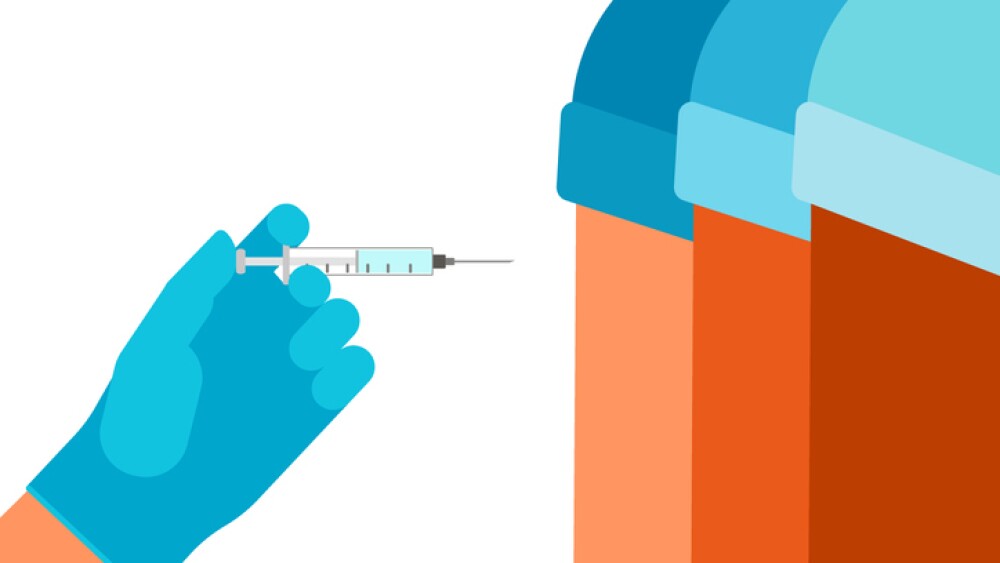CuraSen Therapeutics, Inc., a privately held, clinical-stage biotechnology company, announced Phase 1 proof-of-principle data demonstrating that salbutamol, a drug approved to treat respiratory disease, significantly improved brain perfusion as measured by increased cerebral blood flow (CBF) in healthy subjects.
Data were presented at the 15th International Conference on Alzheimer’s and Parkinson’s Diseases (AD/PD 2021), held in a virtual format from March 9-14, 2021, by Gabriel Vargas, MD, PhD, chief medical officer of CuraSen Therapeutics. The presentation was included in a session entitled “Diagnostics, Biomarkers, Imaging in AD, PD and LBD2,” which featured a live discussion and Q&A on March 14th.
In the Phase 1 study of 12 healthy subjects, CuraSen evaluated the effects of three doses of salbutamol (0.3, 0.9 and 1.8 mg), administered by intravenous infusion, on perfusion in the brain. Salbutamol, also known as albuterol, is an established beta-2 adrenoceptor agonist. Magnetic resonance imaging with arterial spin labeling (ASL), a non-invasive technique for monitoring brain perfusion, was undertaken before and after administration of salbutamol. Some subjects receiving the highest dose of 1.8 mg were also administered nadolol, a peripherally restricted beta blocker, to counteract associated side effects of salbutamol, which include increased heart rate, hyperglycemia, hypokalemia and tremors. Hemodynamic and glycemic monitoring were done in parallel.
Results showed:
-A statistically significant increase in cerebral blood flow in the thalamic region of the brain at the highest dose of 1.8 mg, from 40.0±6 to 50.6±9.4 ml/100g/min, representing an increase of 27.4% (P=0.0081). An increase in cerebral blood flow was not observed at the lower dose levels, despite substantial increases in heart rate and other systemic signals.
-Dose-dependent increases in heart rate observed with salbutamol were eliminated by pre-treatment with nadolol (10-40 mg), along with side effects such as hyperglycemia, hypokalemia and tremor. In contrast, thalamic perfusion responses to salbutamol following pre-treatment with nadolol were preserved, demonstrating the independence of perfusion responses from hemodynamic effects alone.
“Our objective in this study was to demonstrate that a beta-2 adrenoceptor agonist such as salbutamol can impact cell types in key regions of the brain associated with cognition and arousal,” said Dr. Vargas. “Even when controlling for hemodynamic effects of salbutamol with nadolol, these data show that we preserve the perfusion impact in the brain, an encouraging result that supports CuraSen’s clinical hypothesis. Perfusion and metabolic function progressively decline hand-in-hand in early phases of Alzheimer’s, and lead to clinical cognitive decline. Pharmacological restoration of these functions may lead to breakthrough therapeutics in many neurodegenerative diseases.”
Patients developing neurodegenerative diseases experience a loss of critical neurons early in the process, causing adrenergic decline. The loss of neurons occurs in the locus coeruleus (LC), which is located in the brain stem and provides all the norepinephrine, or noradrenaline, to cortical and limbic brain regions. These signals from the LC are normally responsible for maintaining a person’s cognitive function, attentiveness and mood, as well as providing nutritional support to the neurons and to glial cells controlling inflammation and clearing protein debris. Symptoms of adrenergic decline include low attentiveness, loss of memory and mood dysfunction. These symptoms, similar across all neurodegenerative diseases, are poorly managed by existing therapeutic options and significantly impact quality of life for patients and caregivers.
“By activating specific receptors in the brain that can substitute for the ‘lost’ or damaged norepinephrine signals, our goal is to restore diminished adrenergic activation, re-establish cognitive performance and arousal, and potentially halt or reverse the underlying disease pathology and progression,” said Anthony Ford, PhD, chief executive officer, CuraSen. “Importantly, with recent advancements in neuro-imaging techniques, we can now objectively measure the drug-target engagement in a non-invasive way, giving us confidence that our drug is hitting the intended CNS targets. This study underscores the impact that beta adrenoceptor agonism can impart on brain perfusion and function, and supports our ongoing clinical studies with CST-2032, a brain-permeant, adrenoceptor activator slated to enter a Phase 2 trial later this year.”
Neuro-imaging techniques, such as magnetic resonance imaging with arterial spin labeling (ASL), along with FDG-PET imaging of glucose uptake, are also being used to diagnose neurodegenerative diseases, allowing for consistent measurements of changes in the brain over time. Ultimately, they may offer an important avenue to identify and stratify patients most likely to benefit from certain therapeutics. In addition to this preliminary study, CuraSen has initiated clinical studies using other beta agonists, or tool compounds, with more widespread brain penetration than salbutamol. These emerging data, which demonstrate a robust global increase in perfusion, as well as evidence of cognitive benefit, will be presented at future medical meetings.
About CuraSen Therapeutics
CuraSen is focused on the development of new treatments for a variety of neurodegenerative diseases, including Parkinson’s disease, Alzheimer’s disease and other related orphan conditions. CuraSen’s drugs are designed to activate certain receptor populations in the brain to compensate for critical neuronal and glial functions that have otherwise been lost due to degeneration, and represent a unique approach in the field. The company is currently evaluating CST-2032, its first proprietary compound intended for the treatment of neurodegenerative disease, in a multi-part, Phase 1 clinical study. For more information, please visit www.curasen.com.
View source version on businesswire.com: https://www.businesswire.com/news/home/20210315005183/en/
Source: CuraSen Therapeutics, Inc.





